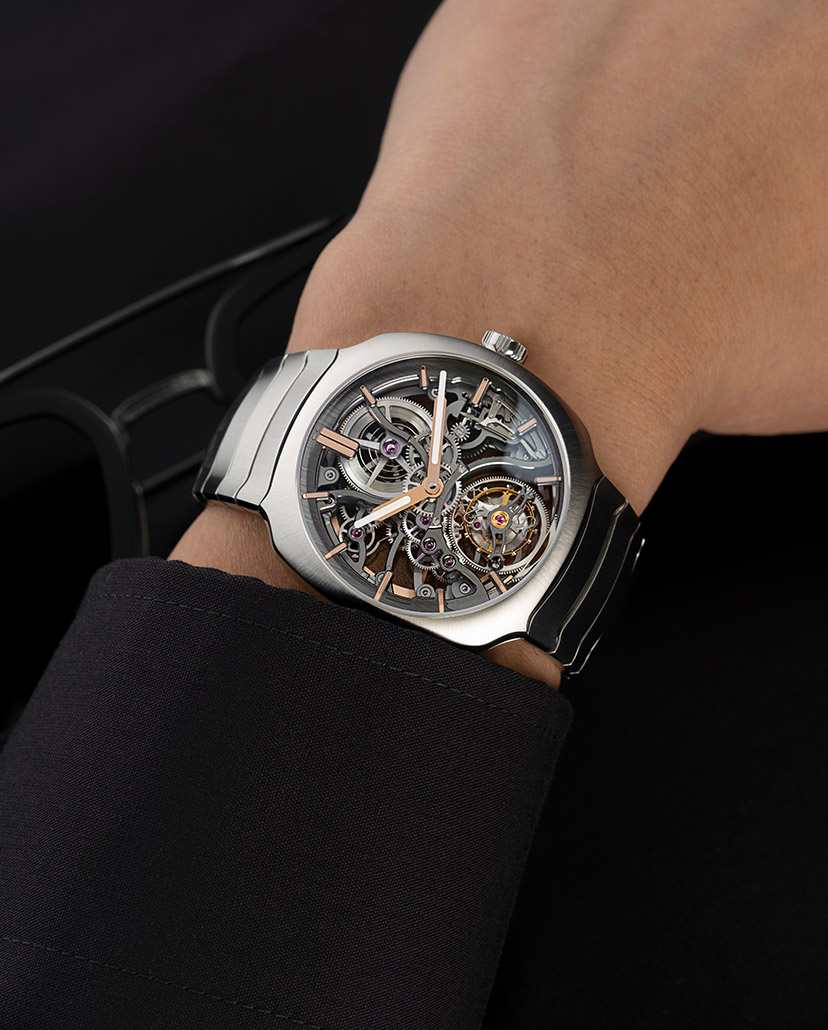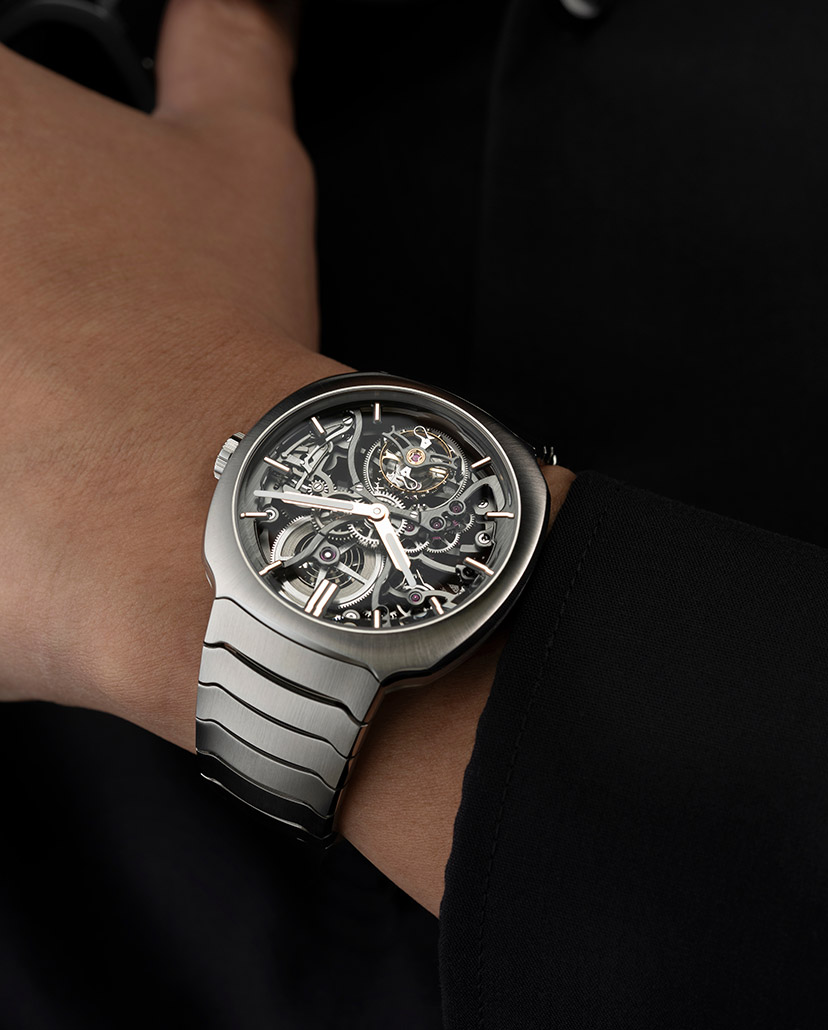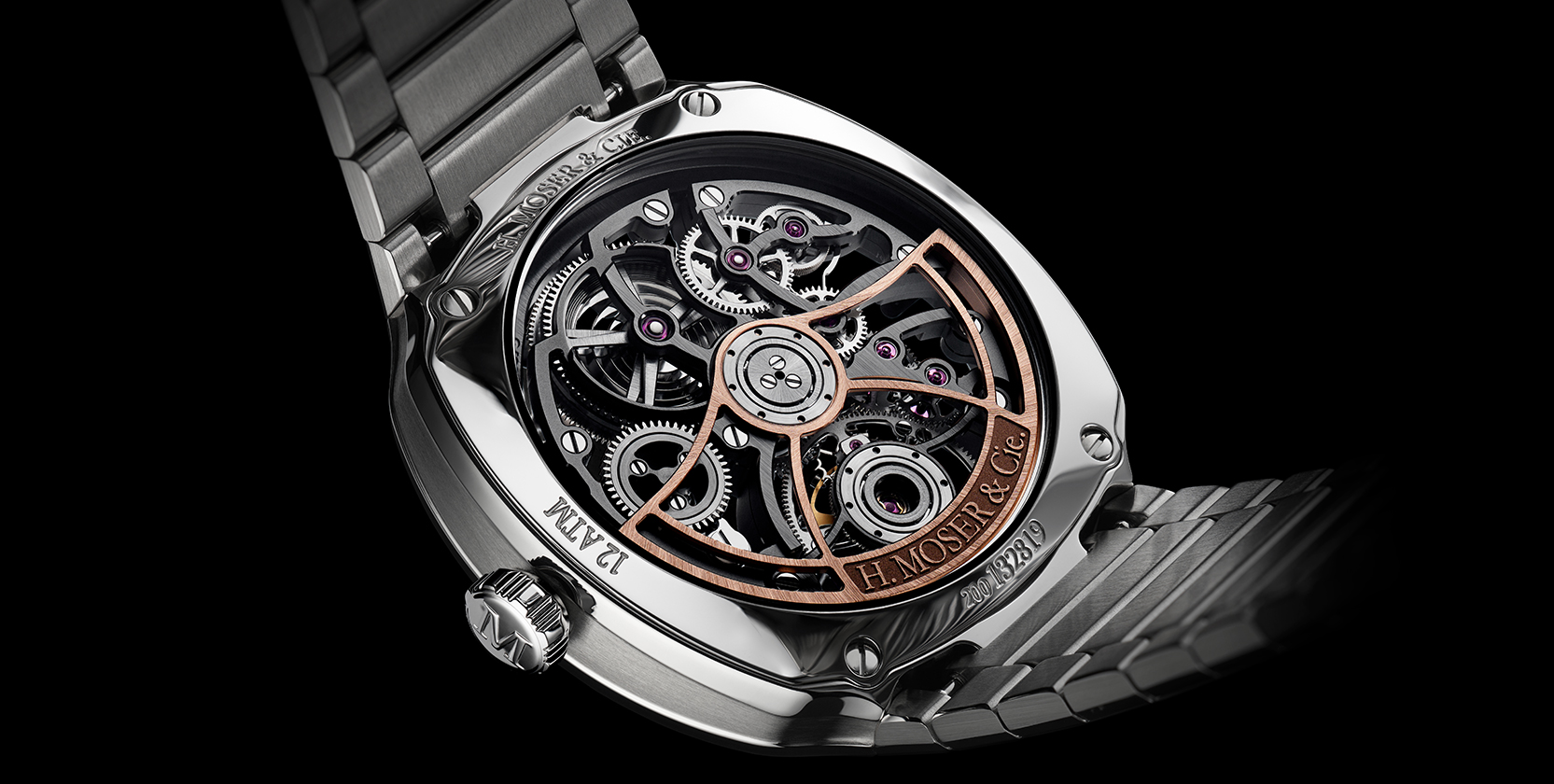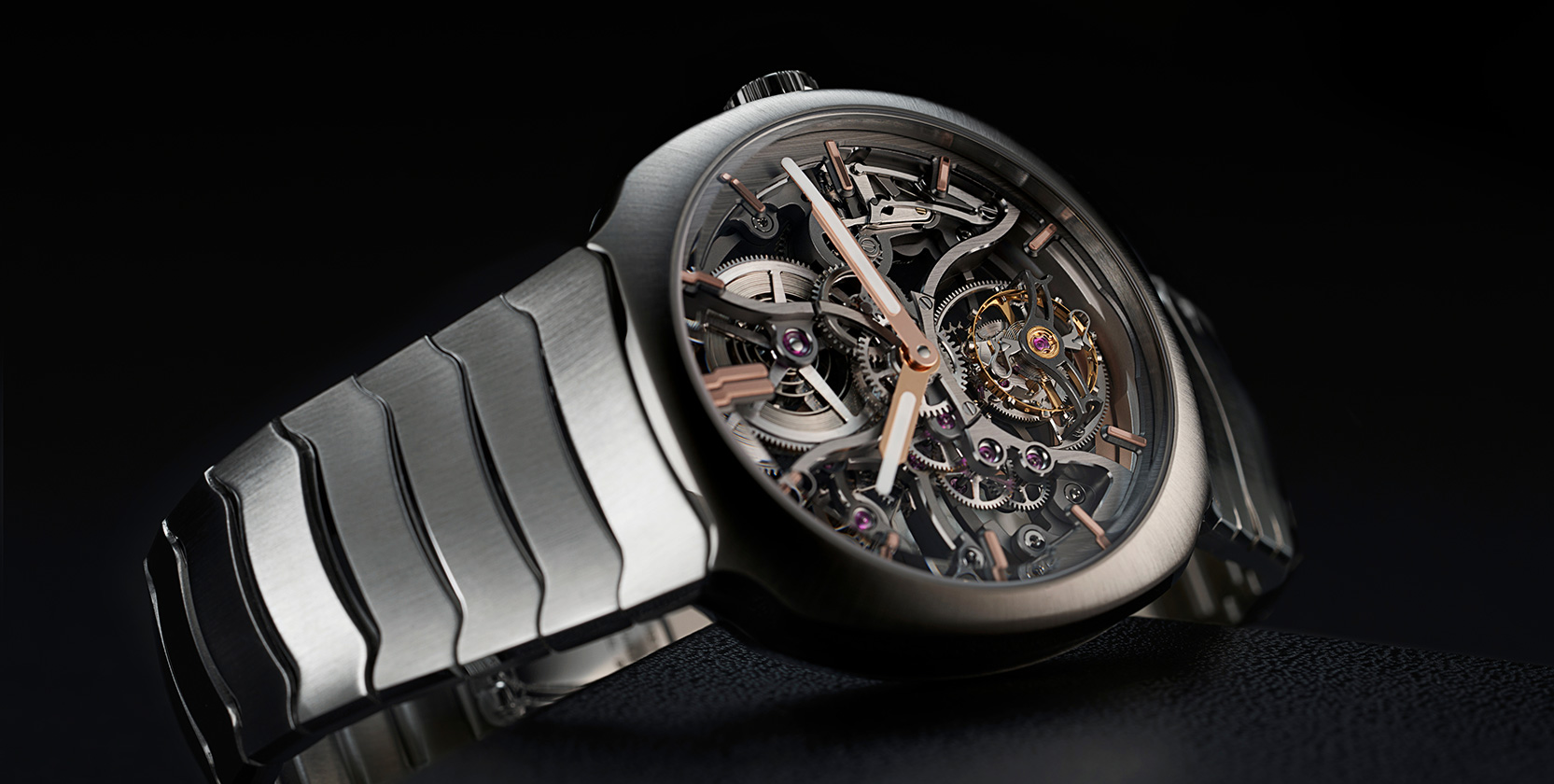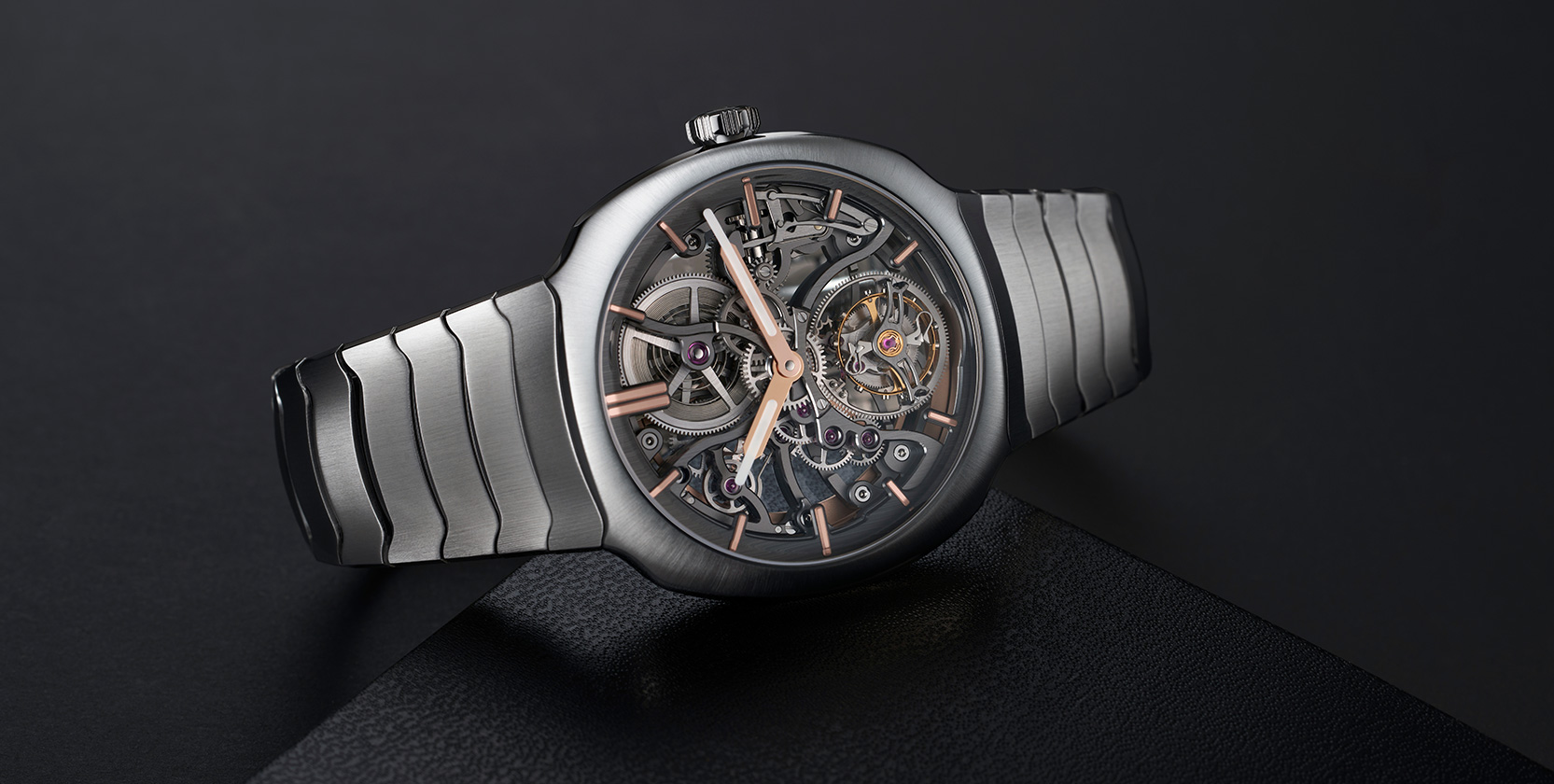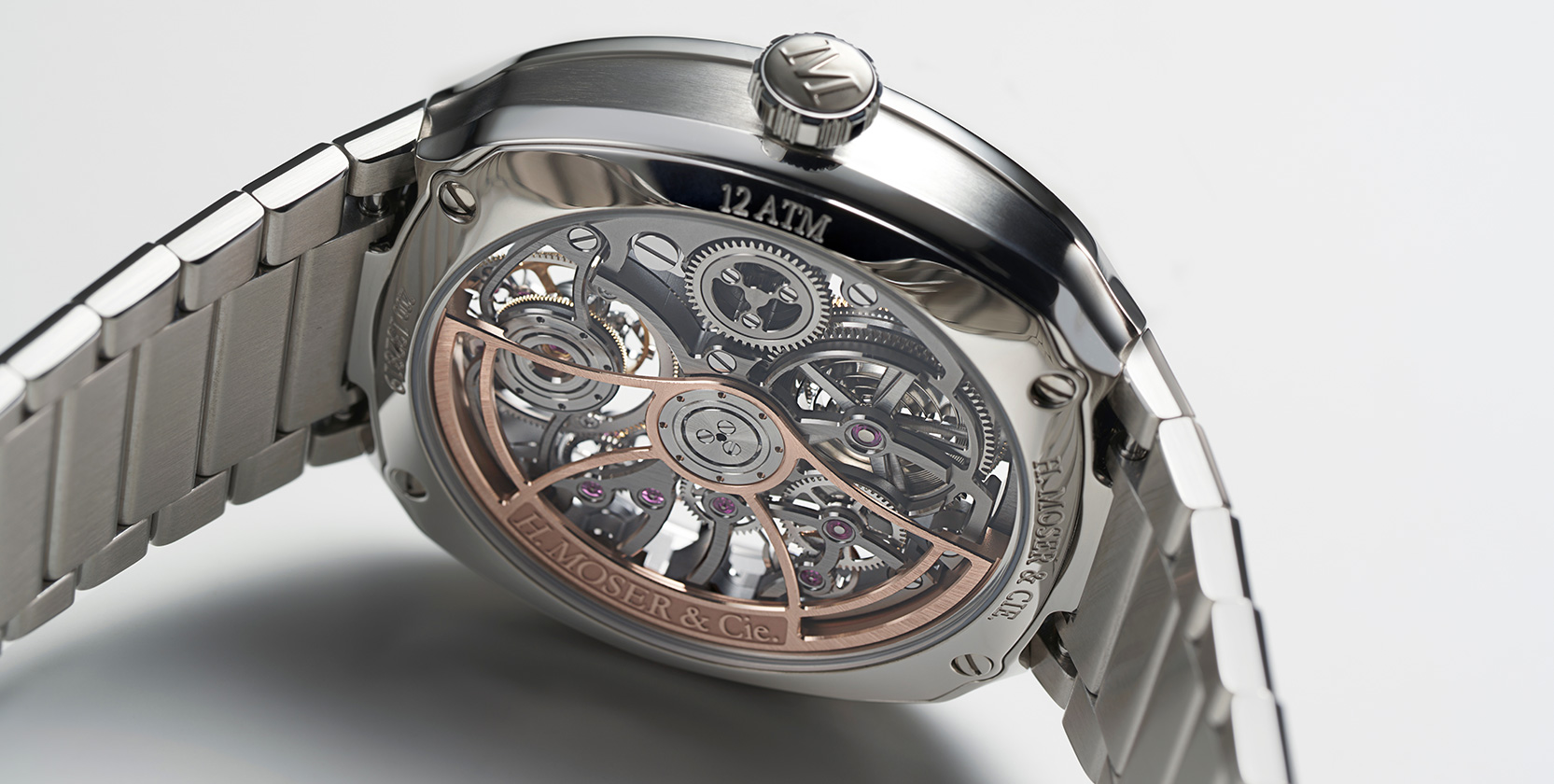SpotlightOpen-Worked Minimalism: Introducing The H. Moser & Cie. Streamliner Tourbillon Skeleton Timepiece
At Watches and Wonders, Geneva, this week, H. Moser & Cie. showcase the Streamliner Tourbillon Skeleton, an integrated luxury sports watch that, despite its openworked dial, displays the brand’s penchant for minimalism with beautifully skeletonised components
May We Recommend
Within the world of horology, where most watchmakers follow existing trends, there are a few who stand out for defining their own rules. H. Moser & Cie. are a fine example of this. Long after openworked watches were already a thing, the brand released the Pioneer Cylindrical Tourbillon Skeleton two years ago at Watches and Wonders, Geneva. This was their first open-worked timepiece, and, at a single glance, one could tell they wanted to do a skeleton dial their own way, instead of simply jumping onto the bandwagon. The brand won the GPHG for the best tourbillon watch back then. This year, at the same venue—Watches and Wonders, Geneva—the brand present their first ever skeletonised timepiece on an integrated and fluid bracelet. Despite the visible frenzy of the movement’s components, the openworked dial of the Streamliner Tourbillon Skeleton is a beautiful display of the much-admired Moser minimalism.

The Sinuous Skeleton: Streamliner Tourbillon Skeleton
The Streamliner’s iconic 40mm cushion-shaped case in steel, and integrated single-link bracelet, ensure a comfortable and ergonomic fit on the wrist, and 120m of water resistance. Satin finishing on the case middle, with brushed and polished finishes matching those of the integrated bracelet, along with the gentle curve of the glass significantly enhance the aesthetic appeal of the Streamliner Tourbillon Skeleton. Housed between the sapphire crystal on the dial side and the open caseback is the brand’s self-winding, three-dimensional, skeletonised calibre, HMC 814, with a bi-directional pawl-winding system and an impressive 72-hour power reserve.
Many of the movement’s 167 components are visible through either the dial or caseback. Precise diamond bevelling decorates the anthracite mainplate and bridges, with additional skeletonisation of components such as the gold rotor (which can be seen from the dial too!) and barrel offering a view of the mainspring. Despite the view of almost all the components arranged three-dimensionally, legibility is paramount. The flange houses 10 rose gold plated indexes, and a double marker at 12 o’clock that stand out against the anthracite and silver finishes of the movement. Timekeeping hands in rose gold feature a Globolight insert that ensure legibility in the dark.
Floating Tourbillon Of The Streamliner Tourbillon Skeleton
At six o’clock, a flying tourbillon replaces the hour marker. This, while not a cylindrical tourbillon of the Pioneer pedigree, is just as three-dimensional, owing to the depth offered by the movement’s openworked components. A minimal, skeletonised bridge makes the tourbillon appear as if it were floating amid the mechanism.

The H. Moser & Cie. Streamliner Tourbillon Skeleton is pared-down to the basics, offering an almost uninterrupted view of the beautifully decorated and highly functional movement. And yet, telling the time on this timepiece remains uncompromised, as is the comfort offered by the integrated bracelet that flows out of the lug-less case. This just goes to show that the brand follow their own rules when it comes to timekeeping—form and function take precedence over trends, and minimalism matters most.


